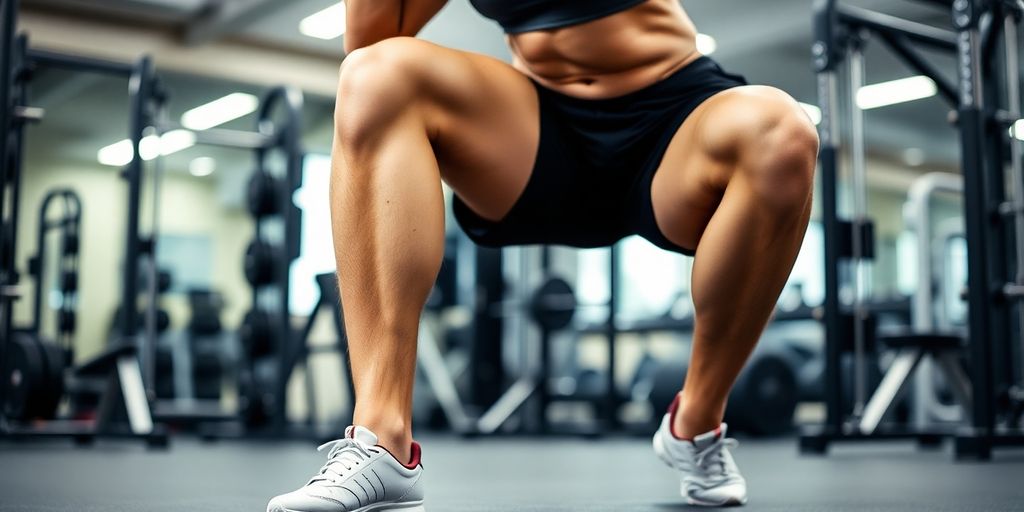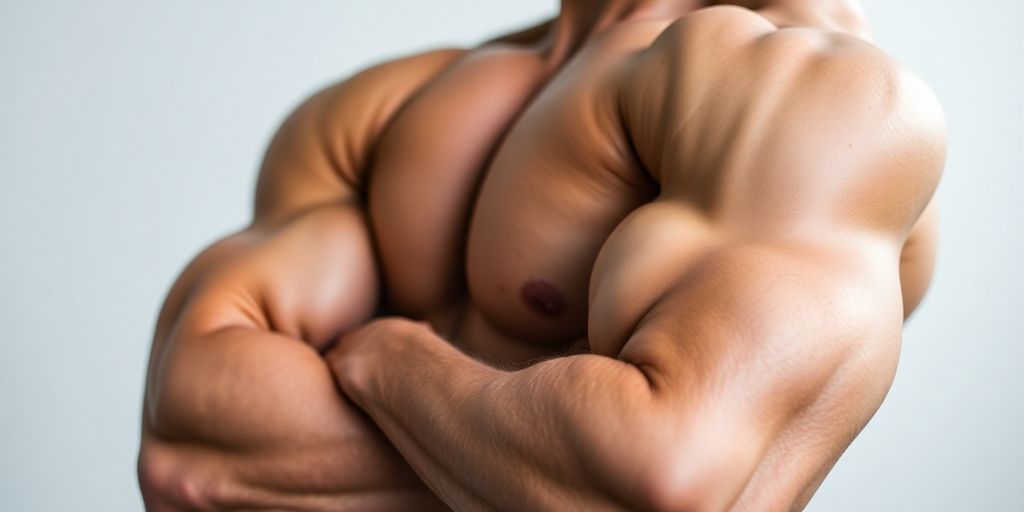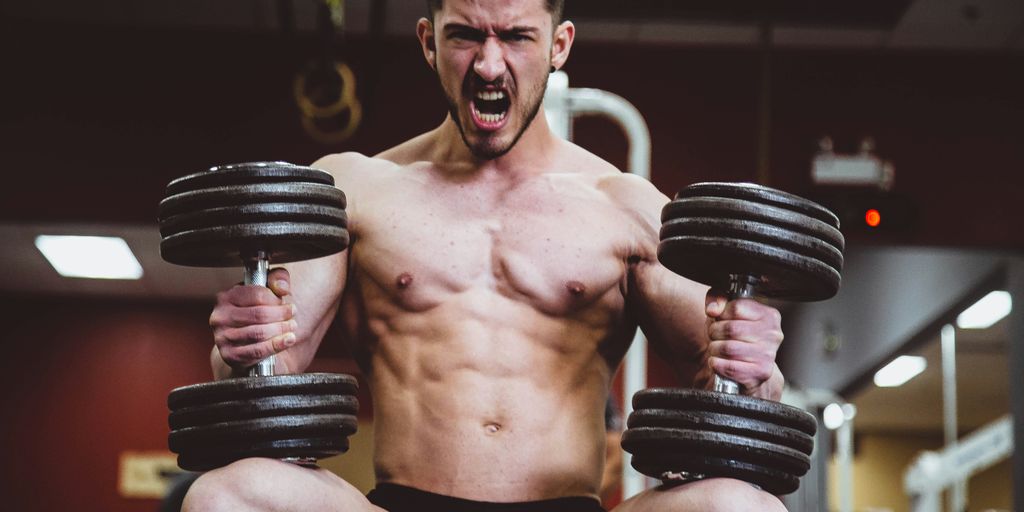Alright, let’s talk leg day. You know, that one day at the gym that everyone seems to dread but secretly loves because it’s the best way to build those powerhouse legs. Whether you’re aiming to boost your squats, perfect your lunges, or just want to feel that satisfying burn in your quads and glutes, I’ve got you covered. This guide is packed with the most effective lower body exercises that’ll have you strutting with confidence. From mastering squats to crafting a balanced gym routine, we’re diving into everything you need to know for a killer leg workout. Let’s get those legs moving!
Key Takeaways
- Squats are essential for building overall lower body strength and engaging multiple muscle groups.
- Lunges help improve balance and target different leg muscles, making them a staple in any leg workout.
- Hamstring curls are crucial for strengthening the back of your legs and preventing injuries.
- Focusing on quads can boost your leg power and enhance performance in various activities.
- Incorporating a balanced gym routine with these exercises can lead to better strength and flexibility.
Mastering the Art of Squats
Benefits of Squats for Lower Body Strength
Squats are a powerhouse exercise for building lower body strength. They engage the quads, hamstrings, glutes, and calves, making them a comprehensive workout for the legs. By incorporating squats into your routine, you can improve muscle mass and enhance overall stability. Plus, squats have a functional benefit—they mimic everyday movements like sitting and standing, which can improve your balance and coordination.
Proper Form and Technique for Squats
Getting the right form is crucial to avoid injuries and maximize effectiveness. Start by standing with your feet shoulder-width apart and your toes slightly pointed out. Place the barbell on your upper back, not your neck, and keep your elbows tucked in. Lower your body by bending your knees and pushing your hips back, ensuring your back stays straight. Aim to go as low as your flexibility allows, ideally until your thighs are parallel to the floor. Push through your heels to return to the starting position. Remember, using a lighter weight is better than compromising form.
Variations of Squats for Different Goals
Squats aren’t one-size-fits-all; there are several variations to suit different fitness goals:
- Front Squats: Focus more on the quads and core.
- Sumo Squats: Target the inner thighs and glutes.
- Box Squats: Help with depth control and are great for beginners.
Experimenting with different types of squats can help you target specific muscle groups and keep your workout routine exciting. Whether you’re looking to improve your squat form with hack squats or build endurance with high-rep sets, there’s a squat variation for you.
Lunges: A Staple in Leg Workouts
Why Lunges Are Essential for Leg Day
Lunges are a must-have in any leg workout routine. They target multiple muscle groups including the glutes, hamstrings, quads, and calves, making them a comprehensive exercise for lower body strength. Lunges not only build muscle but also enhance balance and coordination, which are crucial for athletic performance and everyday activities.
Different Types of Lunges and Their Benefits
Lunges come in various forms, each offering unique benefits:
- Forward Lunges: Great for targeting the quads and improving overall leg strength.
- Reverse Lunges: Easier on the knees and excellent for focusing on the glutes and hamstrings.
- Walking Lunges: Incorporate movement, challenging your balance and coordination while working your quads, hamstrings, and glutes.
- Lateral Lunges: Ideal for engaging the adductors and abductors, muscles often neglected in traditional leg workouts.
Common Mistakes to Avoid When Doing Lunges
Avoiding common mistakes can maximize the benefits of lunges and prevent injuries:
- Leaning Forward: Keep your torso upright to maintain balance and reduce strain on the knees.
- Knee Positioning: Ensure your front knee doesn’t extend past your toes to protect your joints.
- Inconsistent Steps: Maintain equal step lengths to engage muscles evenly on both sides.
When done correctly, lunges can transform your leg day routine, making it more effective and dynamic. Remember, form is key to getting the most out of this versatile exercise.
For more on effective leg exercises, including lunges, check out the top 40 workouts to enhance your fitness routine.
Building Strong Hamstrings with Curls
The Importance of Hamstring Curls in Leg Workouts
Hamstring curls are like the underrated hero of leg workouts. They’re not just about making your legs look good, but they play a big role in keeping your legs strong and flexible. By incorporating hamstring curls into your routine, you’re setting the stage for better balance and injury prevention. Whether you’re running, jumping, or just going about your day, strong hamstrings help you move with ease.
How to Perform Hamstring Curls Correctly
Getting the technique right is key to reaping the benefits of hamstring curls. Here’s a simple guide to ensure you’re on the right track:
- Set Up the Machine: Adjust the machine so your knees align with the pivot point. Make sure the padded lever is snug against your legs.
- Choose Your Weight: Start with a weight that’s manageable. It’s better to go light and focus on form.
- Execute the Curl: With your back straight, curl your legs upward towards your glutes, exhaling as you lift.
- Pause and Return: Hold for a moment at the top, then slowly lower back to the start.
- Repeat: Continue for your desired number of reps. Remember, control is more important than speed.
Alternatives to Traditional Hamstring Curls
If you’re looking to mix things up or don’t have access to a curl machine, there are plenty of other options. Consider these alternatives:
- Dumbbell Hamstring Curls: Lie face down, holding a dumbbell between your feet. It’s a great way to add variety.
- Resistance Band Curls: Attach a band to a low point and curl your legs against the resistance.
- Swiss Ball Hamstring Curls: A fantastic way to engage your core while working the hamstrings. Simply lie on your back with your feet on a Swiss ball and curl it towards you.
Mixing different types of hamstring exercises keeps your workouts fresh and targets the muscles from various angles, ensuring comprehensive development.
By focusing on these exercises and variations, you’re not just building muscle but also enhancing your overall leg function. Remember, the key is consistency and proper form.
Targeting Quads for Maximum Power
Effective Quad Exercises for Strength
When it comes to building powerful quads, a few exercises stand out. Front squats are a fantastic way to directly target the quadriceps by holding the barbell on the shoulders. This positioning allows for better weight distribution and engagement of the quads during the exercise. Another excellent option is the leg press, which can fire up your quads without putting strain on your spine.
Here’s a quick list of effective quad exercises:
- Front Squats: Focuses on quad engagement with proper weight distribution.
- Leg Press: Engages quads, hamstrings, and glutes with minimal spine stress.
- Hack Squats: Emphasizes quadriceps while improving squat form.
Incorporating Quad Workouts into Your Routine
Adding quad exercises into your routine can significantly boost your leg strength. Start by integrating them twice a week, ensuring you have rest days in between to allow for recovery. A typical session could involve a combination of compound movements like squats and isolation exercises such as leg extensions.
- Day 1: Front Squats, Leg Press
- Day 2: Hack Squats, Leg Extensions
Avoiding Injuries While Training Quads
Injury prevention is key when training quads. Focus on form and control, especially when lifting heavy. Avoid locking your knees during exercises like the leg press and ensure your knees don’t cave in. These small adjustments can make a big difference in preventing strain.
Remember, consistency and proper technique are more beneficial than lifting the heaviest weight. Prioritize control and range of motion to maximize effectiveness while minimizing risk.
Enhancing Glute Strength and Stability
Top Exercises for Stronger Glutes
Building strong glutes is more than just about aesthetics; it’s crucial for overall leg power and stability. Here are some top exercises that can help:
- Hip Thrusts – This exercise is a powerhouse for glute development. Sit on the floor with your upper back resting on a bench. Place a barbell across your hips, and thrust upward until your hips are in line with your shoulders and knees.
- Glute Bridges – Lie on your back with your knees bent. Push through your heels to lift your hips off the ground, squeezing your glutes at the top.
- Bulgarian Split Squats – Stand a few feet in front of a bench. Place one foot on the bench behind you, then squat down with your other leg, keeping your torso upright.
The Role of Glutes in Overall Leg Power
The glutes are the largest muscle group in the body and play a key role in many movements. They help with hip extension, which is crucial for movements like running, jumping, and lifting. Strong glutes can enhance your performance in various sports and reduce the risk of injury by stabilizing your pelvis and supporting your lower back.
Tips for Activating Glutes During Workouts
Activating your glutes properly is essential for maximizing your workout. Here are some tips:
- Warm-up with glute activation exercises like clamshells or banded walks to wake up the muscles before your main workout.
- Focus on mind-muscle connection. Think about squeezing your glutes during each rep.
- Use a variety of exercises to target different parts of the glutes, ensuring balanced development.
Consistent glute training not only boosts your performance but also contributes to a balanced physique. Prioritize these exercises in your routine to see significant improvements.
For those interested in bodyweight exercises specifically recommended by physical therapists, explore the significance of bodyweight glute exercises to enhance glute and hip strength.
Crafting a Balanced Gym Routine
Building a well-rounded leg day isn’t just about hammering out squats and lunges. You need to think about how each exercise fits into your overall plan. A good approach is to include a mix of compound movements, like squats and deadlifts, which work multiple muscle groups, and isolation exercises, like leg curls, to target specific areas. Balancing these exercises helps ensure you’re not overworking one part of your legs while neglecting another. Consider this upper/lower workout schedule that focuses on major muscle groups, ensuring balanced training days.
It’s easy to focus solely on lifting heavier weights, but flexibility is just as important. Flexibility helps prevent injuries and improves your range of motion, making your workouts more effective. Incorporate stretching or yoga into your routine to keep your muscles limber. Remember, strength without flexibility can lead to muscle imbalances and potential injuries. Aim for a mix of static and dynamic stretches to maintain a healthy balance.
When crafting your leg day plan, start by identifying your goals. Are you looking to build muscle, increase endurance, or improve flexibility? Once you know what you want to achieve, you can tailor your exercises to meet those goals. For instance, if muscle growth is your aim, focus on progressive overload by gradually increasing the weights you lift. If endurance is your target, incorporate higher reps with lighter weights. And don’t forget to listen to your body—rest and recovery are just as crucial as the workout itself. Create a plan that challenges you but also allows for adequate recovery time.
The Science Behind Strength Training
Muscle growth, or hypertrophy, happens when your muscles repair from the stress of resistance training. The key to muscle growth is putting your muscles under enough stress to cause micro-tears. Your body then repairs these tears, making your muscles stronger and bigger. This process is influenced by factors like genetics, nutrition, and the type of training you do.
The Impact of Leg Workouts on Overall Fitness
Leg workouts are crucial not just for building leg strength but for overall fitness. They engage some of the largest muscle groups, which means they burn a lot of calories and can improve cardiovascular health. Plus, strong legs can enhance performance in other workouts, making leg day an essential part of any leg day hypertrophy workout.
Optimizing Nutrition for Strength Training
Nutrition plays a huge role in how effectively you can build strength. Protein is particularly important because it provides the building blocks your muscles need to repair and grow. Carbs are also essential as they fuel your workouts, while fats help in hormone production. A balanced diet that includes all these nutrients, along with proper hydration, supports muscle recovery and growth.
Remember, consistency in training and nutrition is what will ultimately lead to success. Adapt your diet and workouts to fit your personal goals and lifestyle, and be patient with the process.
Wrapping Up Leg Day
So, there you have it. Leg day isn’t just about getting through a workout; it’s about building a strong foundation for your whole body. Whether you’re squatting, lunging, or deadlifting, each move plays a part in boosting your strength and stability. Remember, it’s not just about lifting heavy weights but doing it right. Focus on your form, listen to your body, and gradually increase your intensity. Your legs are your powerhouse, and with consistent effort, you’ll see improvements not just in your workouts but in everyday activities too. Keep pushing, and don’t skip leg day!
Frequently Asked Questions
What is the best exercise for leg day?
The best exercise for leg day is the squat because it works almost every muscle in your legs, including your glutes, quads, and hamstrings.
How often should I train my legs?
You should aim to train your legs at least twice a week to build strength and muscle.
Can I do leg exercises at home without equipment?
Yes, you can do many leg exercises at home without equipment, like squats, lunges, and calf raises.
Why is it important to have a leg day?
Having a leg day is important because strong legs support your whole body, improve balance, and help with everyday activities.
What are some common mistakes to avoid during leg workouts?
Common mistakes include using too much weight, not keeping proper form, and forgetting to warm up before starting your exercises.
How can I prevent injuries during leg workouts?
To prevent injuries, always warm up first, use proper form, and don’t rush through your exercises.



